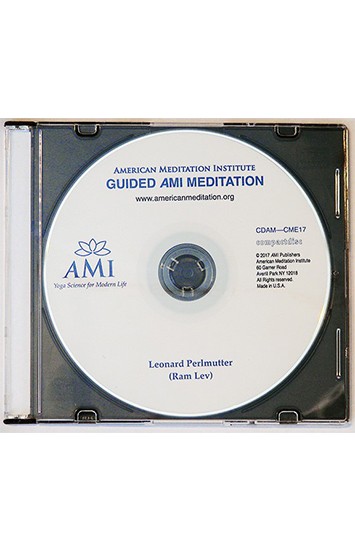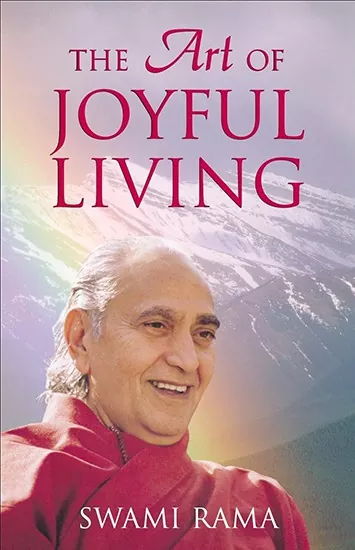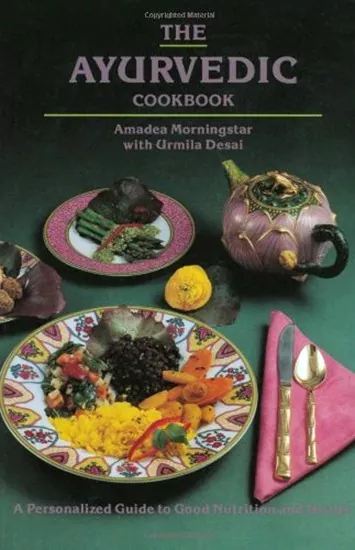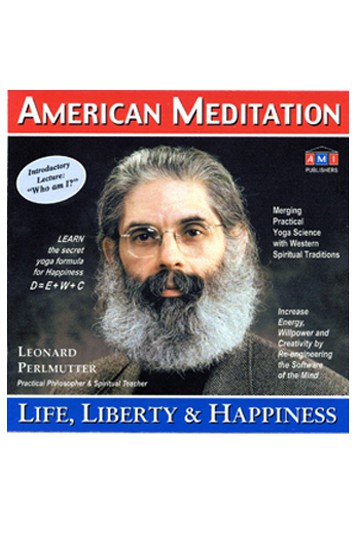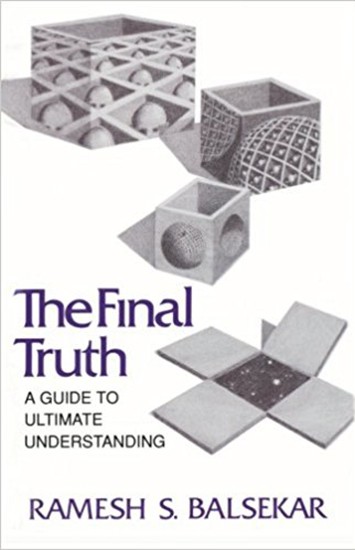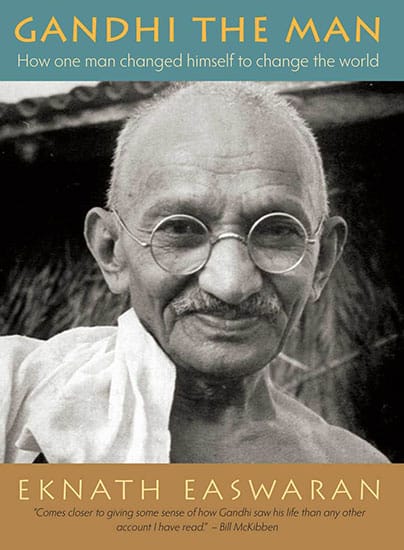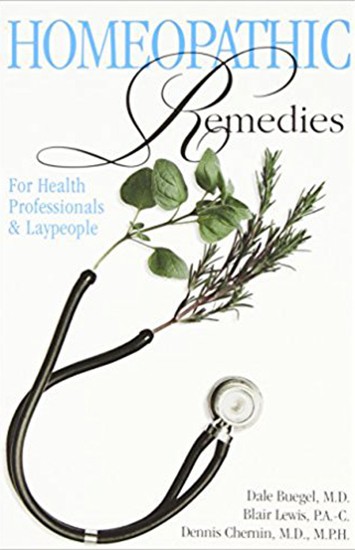-
Out of stock
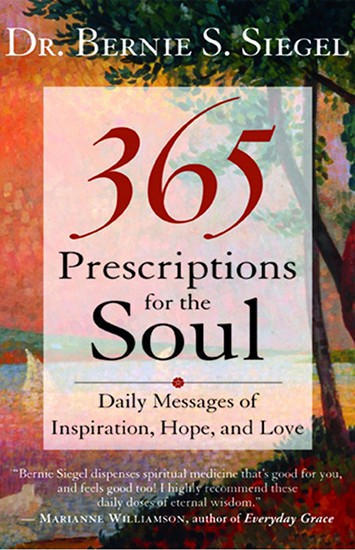 A daily guide for navigating life’s challenges, 365 Prescriptions for the Soul offers bite-sized insights with Dr. Siegel’s unique blend of heart-touching humor and wisdom. Each entry introduces a topic accompanied by an inspirational quote and a “Solution of the Day.” Designed to fit into a busy schedule, the meditations are also easy to understand. They can help create a sense of well-being by pointing the way to more peaceful, loving, and conscious living. As Siegel summarizes: “What heals the soul, heals the mind and body as well.”
A daily guide for navigating life’s challenges, 365 Prescriptions for the Soul offers bite-sized insights with Dr. Siegel’s unique blend of heart-touching humor and wisdom. Each entry introduces a topic accompanied by an inspirational quote and a “Solution of the Day.” Designed to fit into a busy schedule, the meditations are also easy to understand. They can help create a sense of well-being by pointing the way to more peaceful, loving, and conscious living. As Siegel summarizes: “What heals the soul, heals the mind and body as well.” -
Out of stock
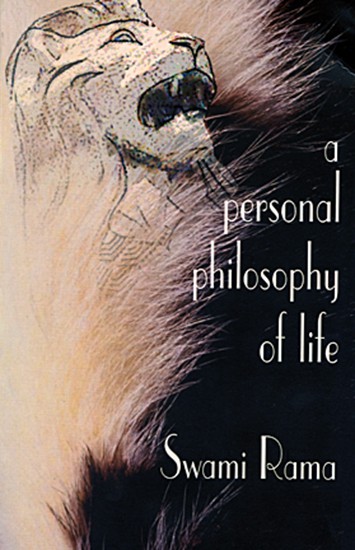 Swami Rama covers the entire philosophy of life in these lectures. It teaches the individual how to understand one word and that is called freedom—freedom from all bondages, from all ignorance. That state which is free from stress, strain, bondage and ignorance is called the state of enlightenment and that can be considered to be the state of perfection.
Swami Rama covers the entire philosophy of life in these lectures. It teaches the individual how to understand one word and that is called freedom—freedom from all bondages, from all ignorance. That state which is free from stress, strain, bondage and ignorance is called the state of enlightenment and that can be considered to be the state of perfection. -
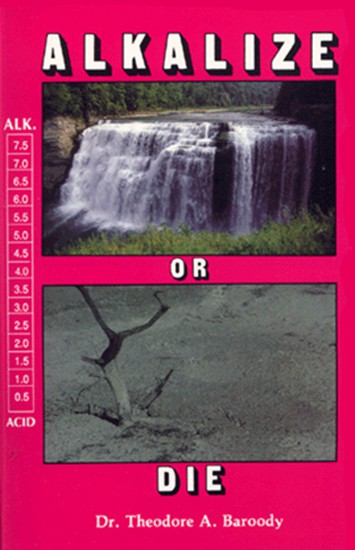 Dr. Theodore Baroody shows how excess acids in the small intestines can negatively affect that vital organ. It will give readers a clear understanding of how alkalizing our body tissues can boost overall health and the health of specific areas of our body. Eating alkaline forming foods is a solution to the problem of excess tissue acids, but drinking alkaline water produced by any of our quality Alkaline water ionizers is a more simple and effective way flushing out acid waste from our body.
Dr. Theodore Baroody shows how excess acids in the small intestines can negatively affect that vital organ. It will give readers a clear understanding of how alkalizing our body tissues can boost overall health and the health of specific areas of our body. Eating alkaline forming foods is a solution to the problem of excess tissue acids, but drinking alkaline water produced by any of our quality Alkaline water ionizers is a more simple and effective way flushing out acid waste from our body. -
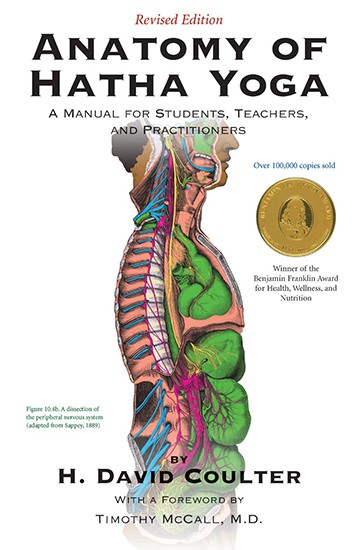 Anatomy of Hatha Yoga—revised and updated with full color illustrations and photos—is the most comprehensive and authoritative work available correlating the study of hatha yoga with anatomy and physiology. It is a must-have for anyone who is serious about studying or teaching yoga, and an invaluable resource for anyone in a field relating to physical conditioning. The author holds a PhD in Anatomy and was a sought-after professor, teacher and yoga practitioner for over thirty years.
Anatomy of Hatha Yoga—revised and updated with full color illustrations and photos—is the most comprehensive and authoritative work available correlating the study of hatha yoga with anatomy and physiology. It is a must-have for anyone who is serious about studying or teaching yoga, and an invaluable resource for anyone in a field relating to physical conditioning. The author holds a PhD in Anatomy and was a sought-after professor, teacher and yoga practitioner for over thirty years. -
 At the Feet of a Himalayan Master unfolds the secrets of personal sadhana and direct contact with a great guru that are rare to find in any published literature, and with contemporary and western disciples facing the modern world and all of its limitations. The book helps us understand the many facets and real nature of genuine spiritual practice in the Himalayan tradition and how it can transform the mind and heart.
At the Feet of a Himalayan Master unfolds the secrets of personal sadhana and direct contact with a great guru that are rare to find in any published literature, and with contemporary and western disciples facing the modern world and all of its limitations. The book helps us understand the many facets and real nature of genuine spiritual practice in the Himalayan tradition and how it can transform the mind and heart. -
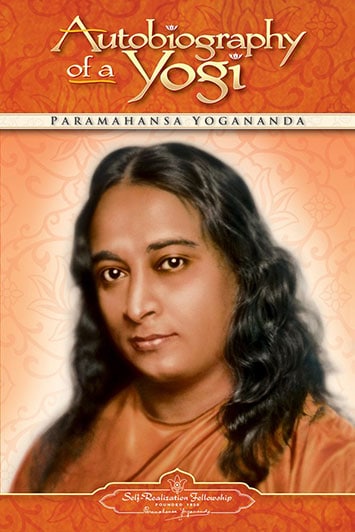 One of the world’s most acclaimed spiritual classics. As the life story of Paramahansa Yogananda- who is often referred to as the Father of Yoga in the West- the book has touched the hearts and minds of millions around the globe. Translated into many languages, it has served as an ambassador for India’s ancient science of yoga, introducing countless readers to the methods for attaining God-realization that are India’s unique and lasting contribution to the world civilization.
One of the world’s most acclaimed spiritual classics. As the life story of Paramahansa Yogananda- who is often referred to as the Father of Yoga in the West- the book has touched the hearts and minds of millions around the globe. Translated into many languages, it has served as an ambassador for India’s ancient science of yoga, introducing countless readers to the methods for attaining God-realization that are India’s unique and lasting contribution to the world civilization. -
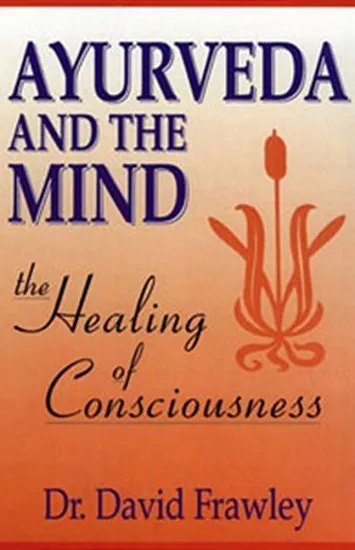 Ayurveda and the Mind is perhaps the first book published in the West that explores specifically the psychological aspect of this great system. The book explores how to heal our minds on all levels from the subconscious to the superconscious, along with the role of diet, impressions, mantra, meditation, yoga and many other methods to create wholeness. Dr. Frawley has once again demonstrated his unique talent of digesting ancient Vedic knowledge and feeding us this understanding which nourishes our body, mind and soul.
Ayurveda and the Mind is perhaps the first book published in the West that explores specifically the psychological aspect of this great system. The book explores how to heal our minds on all levels from the subconscious to the superconscious, along with the role of diet, impressions, mantra, meditation, yoga and many other methods to create wholeness. Dr. Frawley has once again demonstrated his unique talent of digesting ancient Vedic knowledge and feeding us this understanding which nourishes our body, mind and soul. -
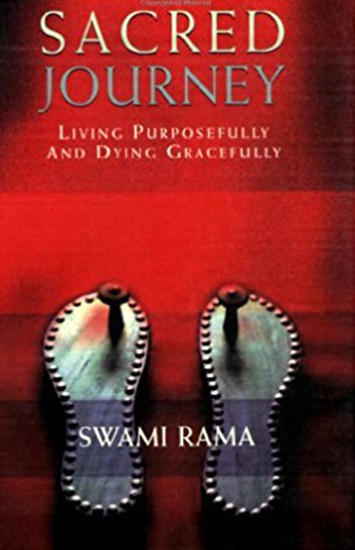 To understand death, a person must try to understand the purpose of life and the relationship between life and death. The two are partners, each providing a context for the other. Death is not a period, but merely a pause on a long journey. When life and death are accepted as having real meaning and purpose, and death is understood and accepted as part of the human journey, then the fear of death disappears and life can be lived fully. This book is about the relationship between life and death, and the 'how and why' of organizing one's life in a way that leads to expansion and growth, and that is helpful in preparing for the transition we call death.
To understand death, a person must try to understand the purpose of life and the relationship between life and death. The two are partners, each providing a context for the other. Death is not a period, but merely a pause on a long journey. When life and death are accepted as having real meaning and purpose, and death is understood and accepted as part of the human journey, then the fear of death disappears and life can be lived fully. This book is about the relationship between life and death, and the 'how and why' of organizing one's life in a way that leads to expansion and growth, and that is helpful in preparing for the transition we call death. -
 The Bhagavad Gita is the fountainhead of Eastern psychology, and this new, authoritative translation and commentary is designed to draw out the psychological concepts of this immortal text and make them accesible to all students. The author focuses on the relevance of these principles to today's world and explains their practical application in daily life. The author shows how each of the eighteen chapters of the Bhagavad Gita constitutes a separate lesson in truth and life. Each chapter describes a different aspect of the process of Self-realization, and the practices themselves progress toward the goal of life.
The Bhagavad Gita is the fountainhead of Eastern psychology, and this new, authoritative translation and commentary is designed to draw out the psychological concepts of this immortal text and make them accesible to all students. The author focuses on the relevance of these principles to today's world and explains their practical application in daily life. The author shows how each of the eighteen chapters of the Bhagavad Gita constitutes a separate lesson in truth and life. Each chapter describes a different aspect of the process of Self-realization, and the practices themselves progress toward the goal of life. -
 Ayurveda Secrets of Healing is the most complete offering of the original cleansing and rejuvenative therapies of Pancha Karma, first taught and practiced by the ancient Vedic seers. In this definitive work, Maya Tiwari is the first author to reveal this sophisticated and timeless healing process in a way which is both comprehensive and readily adaptable to modern western culture. This book .." will be of immense value to health professionals as well as those who are interested in healing themselves," says Dr. Deepak Chopra, M.D.
Ayurveda Secrets of Healing is the most complete offering of the original cleansing and rejuvenative therapies of Pancha Karma, first taught and practiced by the ancient Vedic seers. In this definitive work, Maya Tiwari is the first author to reveal this sophisticated and timeless healing process in a way which is both comprehensive and readily adaptable to modern western culture. This book .." will be of immense value to health professionals as well as those who are interested in healing themselves," says Dr. Deepak Chopra, M.D. -
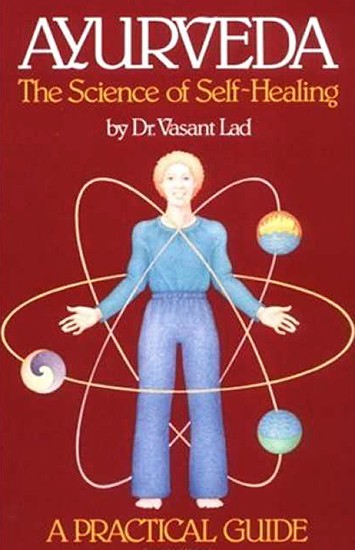 For the first time a book is available which clearly explains the principles and practical applications of Ayurveda, the oldest healing system in the world. This beautifully illustrated text thoroughly explains history & philosophy, basic principles, diagnostic techniques, treatment, diet, medicinal usage of kitchen herbs & spices, first aid, food aid, food antidotes and much more.
For the first time a book is available which clearly explains the principles and practical applications of Ayurveda, the oldest healing system in the world. This beautifully illustrated text thoroughly explains history & philosophy, basic principles, diagnostic techniques, treatment, diet, medicinal usage of kitchen herbs & spices, first aid, food aid, food antidotes and much more. -
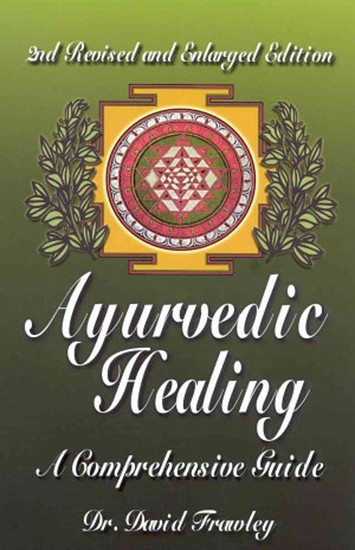 Ayurvedic Healing presents the Ayurvedic treatment of common diseases, covering over eighty different ailments from the common cold to cancer. It provides a full range of treatment methods including diet, herbs, oils, gems, mantra and meditation. The book also shows the appropriate life-style practices and daily health considerations for your unique mind-body type both as an aid to disease treatment and for disease prevention. This extraordinary book is a complete manual of Ayurvedic health care that offers the wisdom of this ancient system of mind-body medicine to the modern reader relative to our special health concerns today. The present edition is a revised and expanded version of the original 1989 edition, covering additional diseases and adding new treatments.
Ayurvedic Healing presents the Ayurvedic treatment of common diseases, covering over eighty different ailments from the common cold to cancer. It provides a full range of treatment methods including diet, herbs, oils, gems, mantra and meditation. The book also shows the appropriate life-style practices and daily health considerations for your unique mind-body type both as an aid to disease treatment and for disease prevention. This extraordinary book is a complete manual of Ayurvedic health care that offers the wisdom of this ancient system of mind-body medicine to the modern reader relative to our special health concerns today. The present edition is a revised and expanded version of the original 1989 edition, covering additional diseases and adding new treatments. -
 Eknath Easwaran is a foremost translator and interpreter of the much-loved Indian scripture, the Bhagavad Gita. He liked to say that his verse-by-verse commentary grew like a tree issuing directly from his life, which was so rooted in the Gita that he found a deep understanding of its teachings in the most everyday experiences – sharing a treat with young children, walking with friends down a busy street, or watching a mime in San Francisco’s Union Square. Easwaran translates each verse, relates it to our modern lives through stories and anecdotes, and gives us spiritual exercises that we can use every day. This first volume in a three-volume set covers chapters 1–6 of the Gita, and concentrates on the individual: the nature of our innermost Self, how it can be discovered in the depths of consciousness, and how this discovery transforms daily life. The introduction includes instructions in Easwaran’s universal method of passage meditation.
Eknath Easwaran is a foremost translator and interpreter of the much-loved Indian scripture, the Bhagavad Gita. He liked to say that his verse-by-verse commentary grew like a tree issuing directly from his life, which was so rooted in the Gita that he found a deep understanding of its teachings in the most everyday experiences – sharing a treat with young children, walking with friends down a busy street, or watching a mime in San Francisco’s Union Square. Easwaran translates each verse, relates it to our modern lives through stories and anecdotes, and gives us spiritual exercises that we can use every day. This first volume in a three-volume set covers chapters 1–6 of the Gita, and concentrates on the individual: the nature of our innermost Self, how it can be discovered in the depths of consciousness, and how this discovery transforms daily life. The introduction includes instructions in Easwaran’s universal method of passage meditation. -
 Eknath Easwaran is a foremost translator and interpreter of the much-loved Indian scripture, the Bhagavad Gita. In this verse-by-verse commentary on the Gita, Easwaran translates each verse, relates it to our modern lives through stories and anecdotes, and gives us spiritual exercises that we can use every day. This second volume in a three-volume set covers chapters 7 – 12 of the Gita, and builds a bridge between scientific knowledge and spiritual wisdom by showing the indivisible unity governing all creation.
Eknath Easwaran is a foremost translator and interpreter of the much-loved Indian scripture, the Bhagavad Gita. In this verse-by-verse commentary on the Gita, Easwaran translates each verse, relates it to our modern lives through stories and anecdotes, and gives us spiritual exercises that we can use every day. This second volume in a three-volume set covers chapters 7 – 12 of the Gita, and builds a bridge between scientific knowledge and spiritual wisdom by showing the indivisible unity governing all creation. -
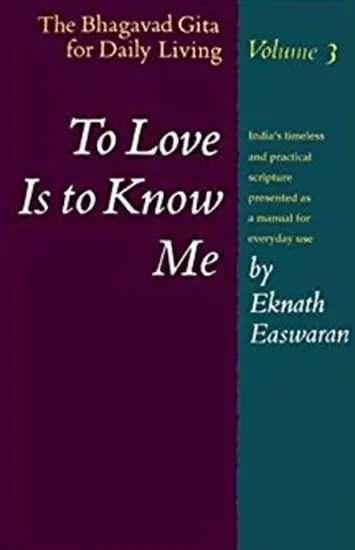 To understand death, a person must try to understand the purpose of life and the relationship between life and death. The two are partners, each providing a context for the other. Death is not a period, but merely a pause on a long journey. When life and death are accepted as having real meaning and purpose, and death is understood and accepted as part of the human journey, then the fear of death disappears and life can be lived fully. This book is about the relationship between life and death, and the 'how and why' of organizing one's life in a way that leads to expansion and growth, and that is helpful in preparing for the transition we call death.
To understand death, a person must try to understand the purpose of life and the relationship between life and death. The two are partners, each providing a context for the other. Death is not a period, but merely a pause on a long journey. When life and death are accepted as having real meaning and purpose, and death is understood and accepted as part of the human journey, then the fear of death disappears and life can be lived fully. This book is about the relationship between life and death, and the 'how and why' of organizing one's life in a way that leads to expansion and growth, and that is helpful in preparing for the transition we call death. -
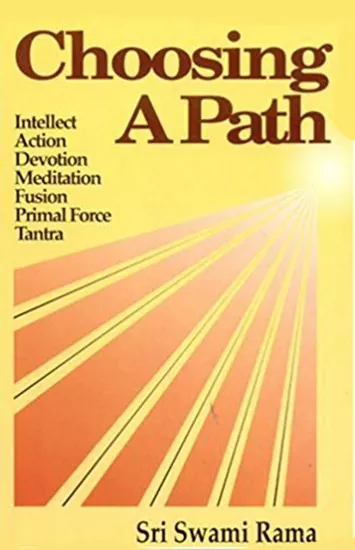 This book gives a glimpse and creates a provocative atmosphere for the intelligent and learned so that they will begin studying their inclination to follow a particular path, and so that they don't waste time and energy in the prevailing confusion of our times, but choose a definite path for themselves. The younger generation today is longing to seek something new and fresh, but it is torn by the conflicts created by guilt and fear. With these views in mind and to serve the needs of the aspirants and free-thinkers, I present this book.
This book gives a glimpse and creates a provocative atmosphere for the intelligent and learned so that they will begin studying their inclination to follow a particular path, and so that they don't waste time and energy in the prevailing confusion of our times, but choose a definite path for themselves. The younger generation today is longing to seek something new and fresh, but it is torn by the conflicts created by guilt and fear. With these views in mind and to serve the needs of the aspirants and free-thinkers, I present this book. -
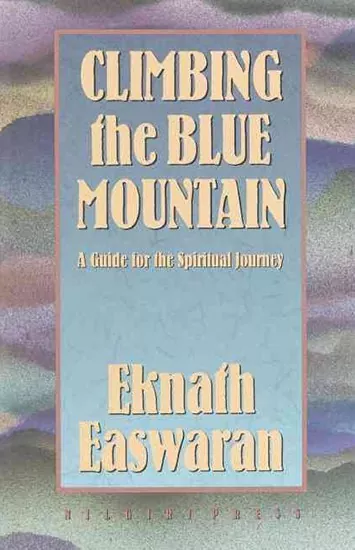 Sixteen lively essays illuminate different aspects of the spiritual journey. The introduction presents the author as a “travel agent” on a journey to the spiritual world within us. The essays are metaphorical travel brochures, invitations to take the plunge into self-discovery through the adventure of meditation. Edited from his extemporaneous talks, this inspiring collection of essays gives the flavor of hearing this great spiritual teacher and storyteller in person. Easwaran successfully combines his Eastern and Western wisdom, which includes a thorough knowledge of English literature, into an eight-point program usable by followers of all religious traditions.
Sixteen lively essays illuminate different aspects of the spiritual journey. The introduction presents the author as a “travel agent” on a journey to the spiritual world within us. The essays are metaphorical travel brochures, invitations to take the plunge into self-discovery through the adventure of meditation. Edited from his extemporaneous talks, this inspiring collection of essays gives the flavor of hearing this great spiritual teacher and storyteller in person. Easwaran successfully combines his Eastern and Western wisdom, which includes a thorough knowledge of English literature, into an eight-point program usable by followers of all religious traditions. -
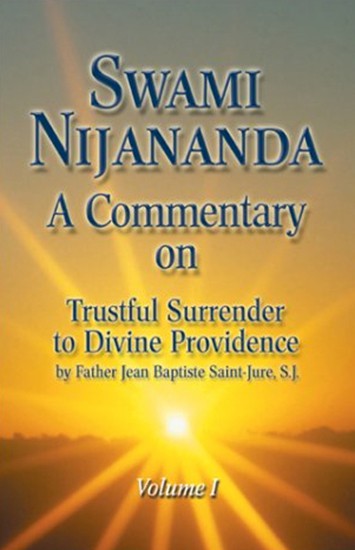 Swami Nijananda's Commentary on Trustful Surrender to Divine Providence Volume I, by Father Jean Baptiste Saint-Jure, is the first volume of lectures to be published. Many of his students felt these lectures were of value to them long after the lecture series ended. This volume explains and illuminates the essential message of Christianity. "In every circumstance, without exception," says Swami Nijananda, surrender to the Lord is the crucial thing...It is your task to harmonize yourself with what the Lord has ordained and not the other way around." This book provides the guidance to orient oneself spiritually in any situation the world presents, however tragic.
Swami Nijananda's Commentary on Trustful Surrender to Divine Providence Volume I, by Father Jean Baptiste Saint-Jure, is the first volume of lectures to be published. Many of his students felt these lectures were of value to them long after the lecture series ended. This volume explains and illuminates the essential message of Christianity. "In every circumstance, without exception," says Swami Nijananda, surrender to the Lord is the crucial thing...It is your task to harmonize yourself with what the Lord has ordained and not the other way around." This book provides the guidance to orient oneself spiritually in any situation the world presents, however tragic. -
 This second volume of Swami Nijananda's Commentary on Trustful Surrender to Divine Providence, is a reflection on the writings of Blessed Claude de la Colombiere, S.J.. This volume continues the discussion of the belief that "nothing happens to us in life unless God wills it so." Swami Nijananda leads an illustrious discussion of a process that turns stumbling blocks into stepping stones.
This second volume of Swami Nijananda's Commentary on Trustful Surrender to Divine Providence, is a reflection on the writings of Blessed Claude de la Colombiere, S.J.. This volume continues the discussion of the belief that "nothing happens to us in life unless God wills it so." Swami Nijananda leads an illustrious discussion of a process that turns stumbling blocks into stepping stones. -
 Getting caught in unwanted thoughts and emotions can feel like an inevitable part of life. But Eknath Easwaran, a world-famous spiritual teacher who taught meditation for nearly 40 years, shows a way to break free. Just as a fitness routine can result in a strong, supple body, spiritual disciplines can shape a secure personality and a resilient, loving mind. Best of all, these opportunities to grow stronger spiritually arise not only during meditation but throughout the day. Whether working with difficult colleagues, going out to eat, or responding to a child’s needs, readers learn how to try out different, wiser choices. With humor and empathy, Easwaran places timeless teachings from the Buddha and other mystics into contemporary scenes — watching a juggler on the street, taking a tennis lesson, going to the theater. Training the mind is life’s biggest adventure, and Conquest of Mind shows how this practice brings deepening relationships, increasing vitality, and a greater sense of purpose.
Getting caught in unwanted thoughts and emotions can feel like an inevitable part of life. But Eknath Easwaran, a world-famous spiritual teacher who taught meditation for nearly 40 years, shows a way to break free. Just as a fitness routine can result in a strong, supple body, spiritual disciplines can shape a secure personality and a resilient, loving mind. Best of all, these opportunities to grow stronger spiritually arise not only during meditation but throughout the day. Whether working with difficult colleagues, going out to eat, or responding to a child’s needs, readers learn how to try out different, wiser choices. With humor and empathy, Easwaran places timeless teachings from the Buddha and other mystics into contemporary scenes — watching a juggler on the street, taking a tennis lesson, going to the theater. Training the mind is life’s biggest adventure, and Conquest of Mind shows how this practice brings deepening relationships, increasing vitality, and a greater sense of purpose. -
 This is a practical book for people living in the world. The word "practical" implies that the teaching can be practiced in the world, in the midst of family, career and social obligations. No prior preparation is required for reading this book, and after reading this book, no further teaching is required. If one were to sincerely practice the teachings presented by Sri Swami Rama in this book, one will surely achieve the goal of self realization, a state described by Swamiji as the summum bonum of life, a state of bliss, a state of perfection.
This is a practical book for people living in the world. The word "practical" implies that the teaching can be practiced in the world, in the midst of family, career and social obligations. No prior preparation is required for reading this book, and after reading this book, no further teaching is required. If one were to sincerely practice the teachings presented by Sri Swami Rama in this book, one will surely achieve the goal of self realization, a state described by Swamiji as the summum bonum of life, a state of bliss, a state of perfection. -
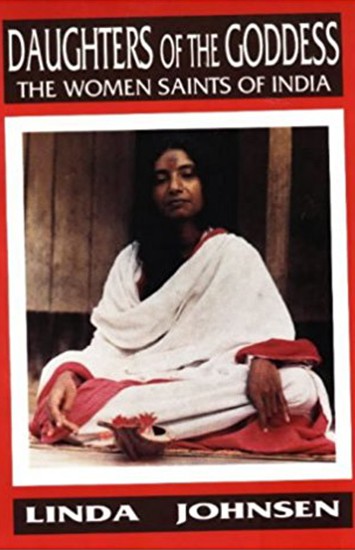 This book takes us along on a search for the feminine face of God. We travel with Linda Johnsen for a fascinating investigation of the great women saints of India who manifest the divine in their lives. Together with her we comb the scriptures, meet the holy ones, and are led, step by step, to sit in awe at the feet of six remarkable, contemporary women.
This book takes us along on a search for the feminine face of God. We travel with Linda Johnsen for a fascinating investigation of the great women saints of India who manifest the divine in their lives. Together with her we comb the scriptures, meet the holy ones, and are led, step by step, to sit in awe at the feet of six remarkable, contemporary women. -
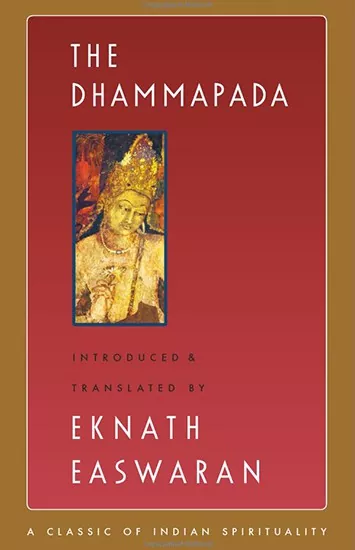 An English-language book originally published in 1986. It contains Easwaran's translation of the Dhammapada, a Buddhist scripture traditionally ascribed to the Buddha himself. The book also contains a substantial overall introduction of about 70 pages,[2] as well as introductory notes to each of the Dhammapada's 26 chapters.
An English-language book originally published in 1986. It contains Easwaran's translation of the Dhammapada, a Buddhist scripture traditionally ascribed to the Buddha himself. The book also contains a substantial overall introduction of about 70 pages,[2] as well as introductory notes to each of the Dhammapada's 26 chapters. -
Out of stock
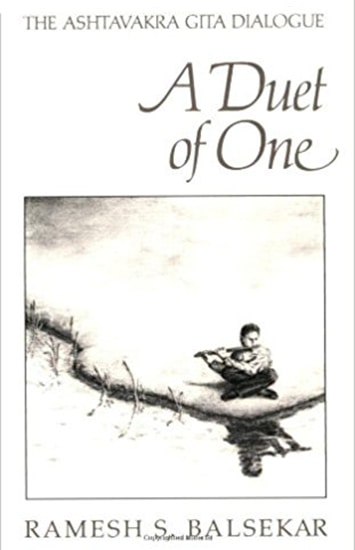 A Duet of One is a translation and interpretation of the most touchingly beautiful of all the Advaitic texts. It provides us with an illuminating and in-depth look at the nature of duality and dualism. In this book Ramesh reveals himself as a spiritual Master for the modern age. His insightful commentary unlocks the beauty and the mystery in this ancient text. He points us to the Understanding that is the true nature of us all.
A Duet of One is a translation and interpretation of the most touchingly beautiful of all the Advaitic texts. It provides us with an illuminating and in-depth look at the nature of duality and dualism. In this book Ramesh reveals himself as a spiritual Master for the modern age. His insightful commentary unlocks the beauty and the mystery in this ancient text. He points us to the Understanding that is the true nature of us all. -
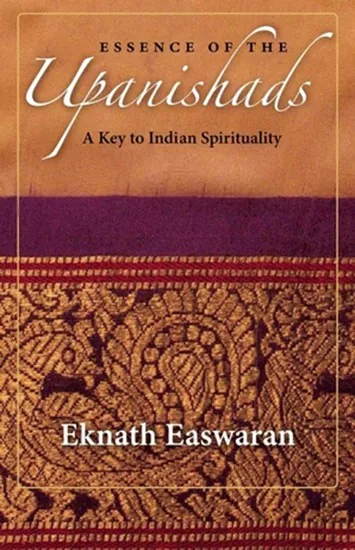 Easwaran takes one of India's classic wisdom texts, the Katha Upanishad, and explains how it embraces all the key ideas of Indian spirituality within the context of a powerful mythic quest - the story of a young hero who ventures into the land of death in search of immortality. Illustrating the insights of the Katha through analogies and everyday examples, Easwaran shows how these ancient teachings help us gain a deeper understanding of our world and ourselves today.
Easwaran takes one of India's classic wisdom texts, the Katha Upanishad, and explains how it embraces all the key ideas of Indian spirituality within the context of a powerful mythic quest - the story of a young hero who ventures into the land of death in search of immortality. Illustrating the insights of the Katha through analogies and everyday examples, Easwaran shows how these ancient teachings help us gain a deeper understanding of our world and ourselves today. -
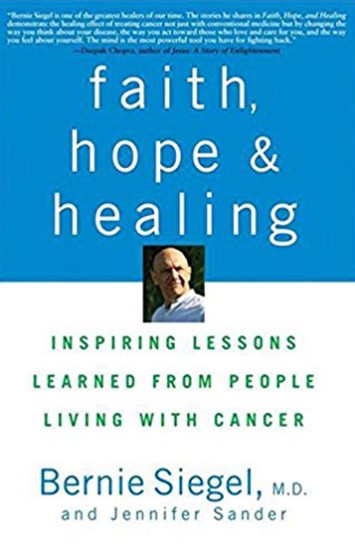 In this collection of first-person accounts, doctor and author Siegel (Love, Medicine, and Miracles) brings together almost three dozen cancer patients (or close relations of) to share their stories and the lessons they've learned. Many entries tackle the moment of diagnosis (the first, from survivor Angela Passidomo Trafford, opens with the line, "How many times do I have to have cancer?!"), while others pick up at the moment the diagnosis first hits home; still others focus on the end, like Ann Martin Bowler, whose sick brother passed days after a reinvigorating near-death experience. Lynn Zeller contributes a list of the "eight practices" she discovered through cancer that have led to a "wonderfully expanded experience of life" (including a focus on gratitude, mindfulness, and the idea that the universe "is in a conspiracy for my good"); Edwina Ford focuses on her afflicted husband's admiration, and efforts on behalf, of Lance Armstrong's post-surgery Tour de France comeback. For each piece, Siegel provides a reflection and a moral ("Life's difficulties are what teach us to grow") that clarify and encourage. Anyone struggling with cancer will find many relatable voices and, in Siegel, a compassionate expert commentator.
In this collection of first-person accounts, doctor and author Siegel (Love, Medicine, and Miracles) brings together almost three dozen cancer patients (or close relations of) to share their stories and the lessons they've learned. Many entries tackle the moment of diagnosis (the first, from survivor Angela Passidomo Trafford, opens with the line, "How many times do I have to have cancer?!"), while others pick up at the moment the diagnosis first hits home; still others focus on the end, like Ann Martin Bowler, whose sick brother passed days after a reinvigorating near-death experience. Lynn Zeller contributes a list of the "eight practices" she discovered through cancer that have led to a "wonderfully expanded experience of life" (including a focus on gratitude, mindfulness, and the idea that the universe "is in a conspiracy for my good"); Edwina Ford focuses on her afflicted husband's admiration, and efforts on behalf, of Lance Armstrong's post-surgery Tour de France comeback. For each piece, Siegel provides a reflection and a moral ("Life's difficulties are what teach us to grow") that clarify and encourage. Anyone struggling with cancer will find many relatable voices and, in Siegel, a compassionate expert commentator. -
 Phil Nuernberger's From Loneliness to Love picks up where his prior book "The Quest For Personal Power" ends. The author briefly restates his methods for achieving self-knowledge, self-mastery and self-fulfillment which the reader will find clearly explained in "The Quest." Phil's message is that loneliness is a spiritual problem, an illusion created by our ego. He prescribes prayer, meditation, and contemplation as the means to achieving the mystical experience of love.
Phil Nuernberger's From Loneliness to Love picks up where his prior book "The Quest For Personal Power" ends. The author briefly restates his methods for achieving self-knowledge, self-mastery and self-fulfillment which the reader will find clearly explained in "The Quest." Phil's message is that loneliness is a spiritual problem, an illusion created by our ego. He prescribes prayer, meditation, and contemplation as the means to achieving the mystical experience of love. -
 One cannot talk about God, Dr. Arya tells us; one can only be conscious of Him experientially. Everyone is looking for God: the alcoholic in his bottle, the child in his Superman comics, the artist in his work. The need to know God springs from our deepest nature. But most of us are not aware of this. And so, drawing upon his own rich background in the yoga-Vedanta tradition, the author tells us how this awareness can be developed in everyone (including atheists and agnostics).
One cannot talk about God, Dr. Arya tells us; one can only be conscious of Him experientially. Everyone is looking for God: the alcoholic in his bottle, the child in his Superman comics, the artist in his work. The need to know God springs from our deepest nature. But most of us are not aware of this. And so, drawing upon his own rich background in the yoga-Vedanta tradition, the author tells us how this awareness can be developed in everyone (including atheists and agnostics). -
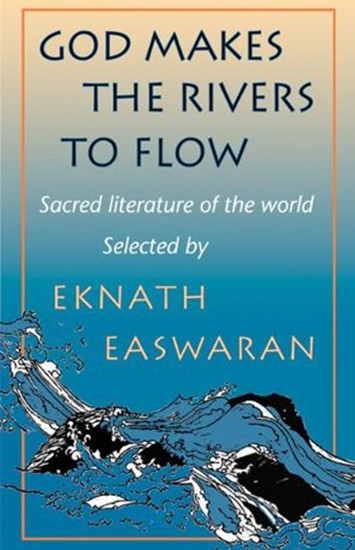 Chosen for their universal spiritual appeal, literary merit, and recognized wisdom, these selections are perfect subjects for meditation and daily inspirational reading. Drawing from Christian, Jewish, Hindu, Buddhist, Muslim, and Native American sacred literature, this expanded third edition serves as a useful reference and guide to world mysticism. Included are Easwaran's criteria for choosing personally transformative passages, tips on memorization, and suggestions for further reading.
Chosen for their universal spiritual appeal, literary merit, and recognized wisdom, these selections are perfect subjects for meditation and daily inspirational reading. Drawing from Christian, Jewish, Hindu, Buddhist, Muslim, and Native American sacred literature, this expanded third edition serves as a useful reference and guide to world mysticism. Included are Easwaran's criteria for choosing personally transformative passages, tips on memorization, and suggestions for further reading. -
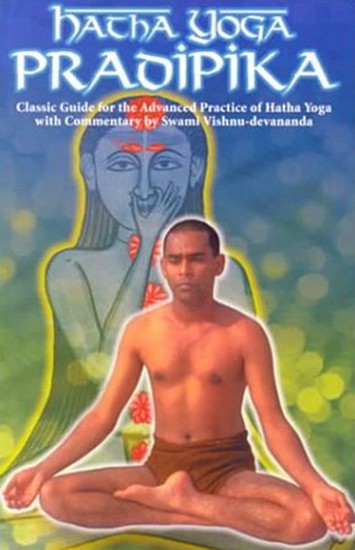 The Hatha Yoga Pradipika is a classical text describing Hatha Yoga. It is said to be the oldest surviving text on Hatha Yoga. Swami Swatmarama, a disciple of Swami Goraknath, wrote the text in the 15th century CE, drawing upon previous texts and his own experiences. While the text describes asanas (postures), purifying practices (shatkarma), mudras (finger and hand positions), bandhas (locks), and pranayama (breath exercises), it also explains that the purpose of Hatha Yoga is the awakening of kundalini (subtle energy), advancement to Raja Yoga, and the experience of deep meditative absorption known as samadhi.
The Hatha Yoga Pradipika is a classical text describing Hatha Yoga. It is said to be the oldest surviving text on Hatha Yoga. Swami Swatmarama, a disciple of Swami Goraknath, wrote the text in the 15th century CE, drawing upon previous texts and his own experiences. While the text describes asanas (postures), purifying practices (shatkarma), mudras (finger and hand positions), bandhas (locks), and pranayama (breath exercises), it also explains that the purpose of Hatha Yoga is the awakening of kundalini (subtle energy), advancement to Raja Yoga, and the experience of deep meditative absorption known as samadhi. -
 The Yoga Aphorisms of Patanjali is a major work on the practice of yoga and meditation. Through these ancient aphorisms you will learn how to control your mind and achieve inner peace and freedom. Although these methods were taught over 2,000 years ago, they are as alive and effective today as they have ever been.
The Yoga Aphorisms of Patanjali is a major work on the practice of yoga and meditation. Through these ancient aphorisms you will learn how to control your mind and achieve inner peace and freedom. Although these methods were taught over 2,000 years ago, they are as alive and effective today as they have ever been. -
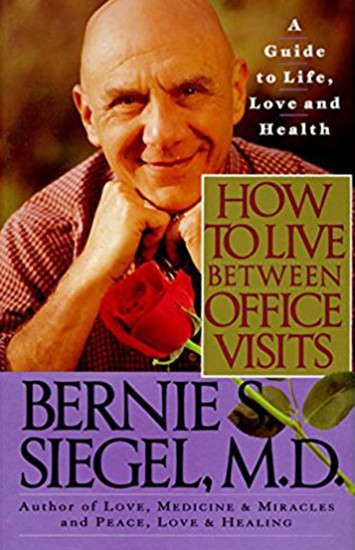 How to Live Between Office Visits will show you helpful insights for reaching healing and happiness. The book includes great stories that can help you through life’s hard challenges and struggles and come out lighter, brighter, and happier. It is full of witty and helpful assertions and anecdotes from Bernie’s years of medical practice. If you need or want any help getting through office visits with hope, light and health; or you just want to have a better outlook for life, this is the book for you! It also makes a great gift for a loved one that could use a little help.
How to Live Between Office Visits will show you helpful insights for reaching healing and happiness. The book includes great stories that can help you through life’s hard challenges and struggles and come out lighter, brighter, and happier. It is full of witty and helpful assertions and anecdotes from Bernie’s years of medical practice. If you need or want any help getting through office visits with hope, light and health; or you just want to have a better outlook for life, this is the book for you! It also makes a great gift for a loved one that could use a little help.


